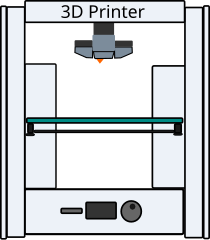
SEM
Sam the Scanning Electron Microscope
This is a page dedicated to Sam, the scanning electron microscope. Sam was in a state of non-functional disrepair. He came to our garage in 2019. We repaired him, took micrographs of everyday objects, made a web streaming and control interface, then sold him to a new loving family.

Mass Spectrometry
Visualization and Demonstration
This page is a work in-progress. The two main features are a HTMl5/JS based mass spec simulation and a macroscopic ion trap demonstration.

3D Prints
Models Intended for 3D printing
The page is mainly added due to the fun of integrating STL files into a webpage. They render relatively quickly and are quite responsive to panning. I make models quite often, so hopefully I will add more to this collection soon. I am especially excited about 3D prints geared towards hobbiests.
POV Display
2D Spinning LED Persistence of Vision (POV) Display
Although all photo-emitting displays rely on human eye/brain persistence of vision, some exploit it more than others. When it comes to hobby projects, there are very few feasible display options. One tedious option is a rectangular matrix of LEDs. The overhead of soldering each LED becomes a major component of the project with clever multiplexing and LED driving methods becoming a secondary task. One of the other options for a hobby display is to spin a single row of LEDs to make a display that truly relies on persistence of vision. The projects described here subscribe to the latter display method to produce 2D and 3D displays.